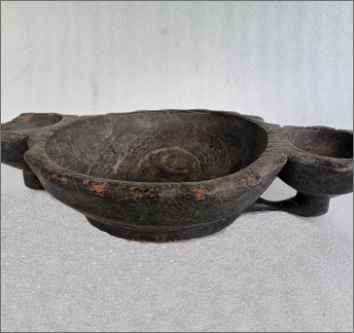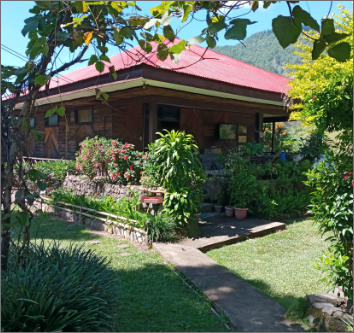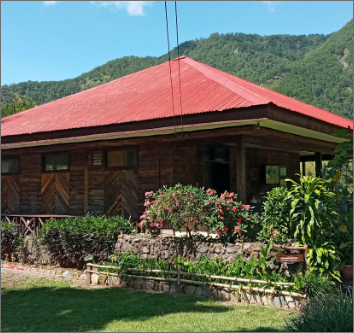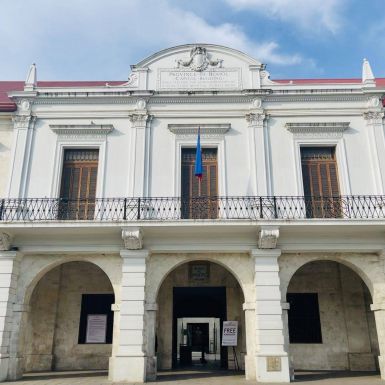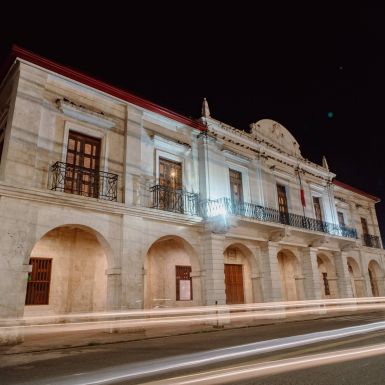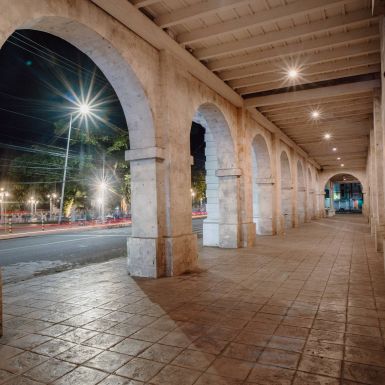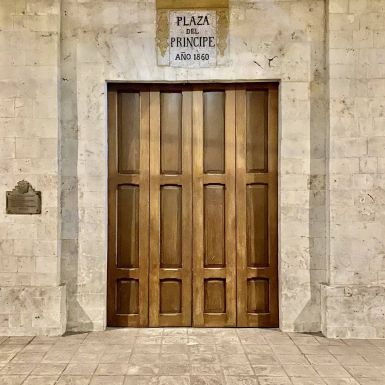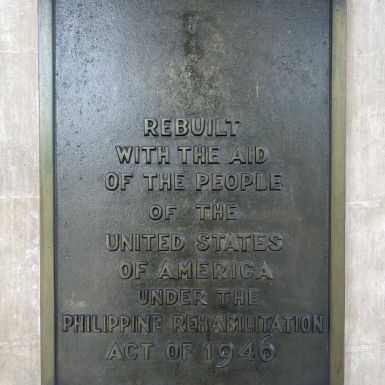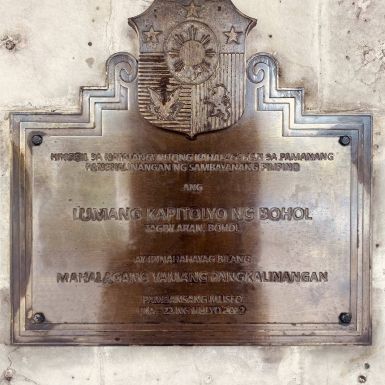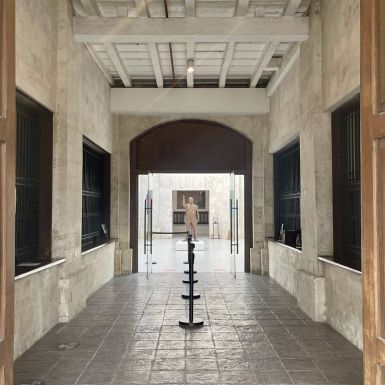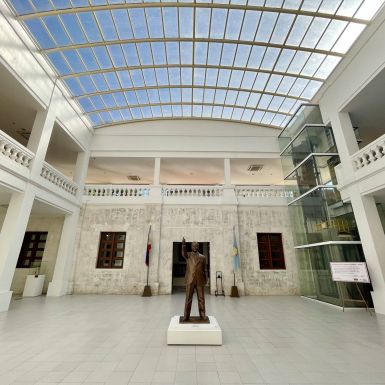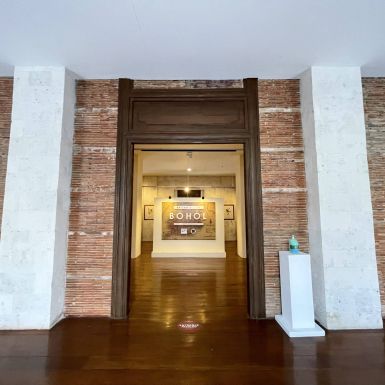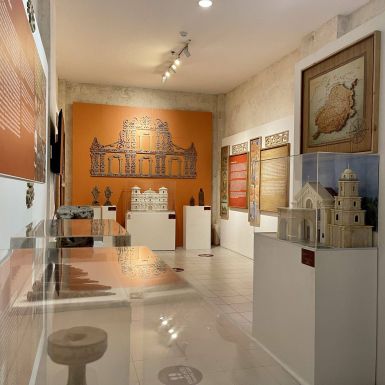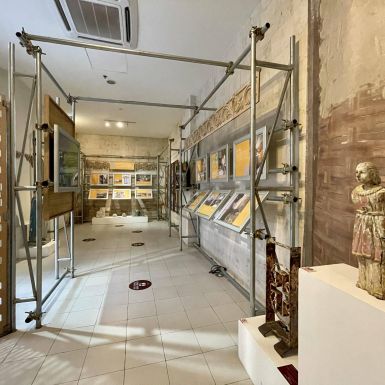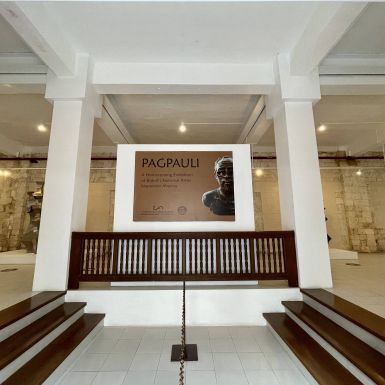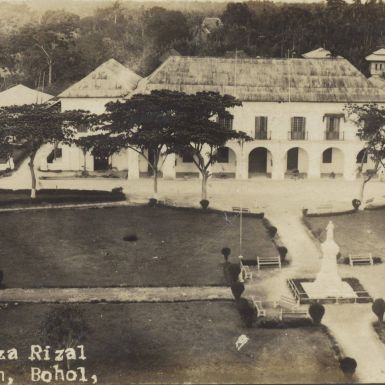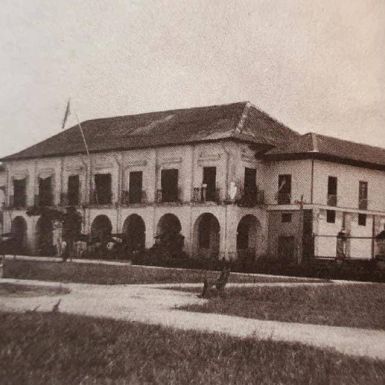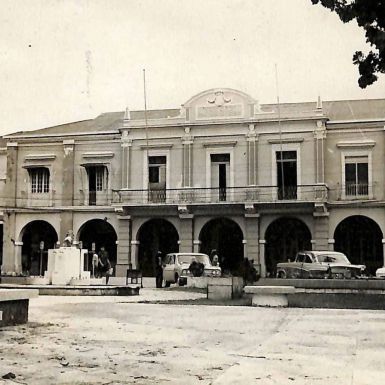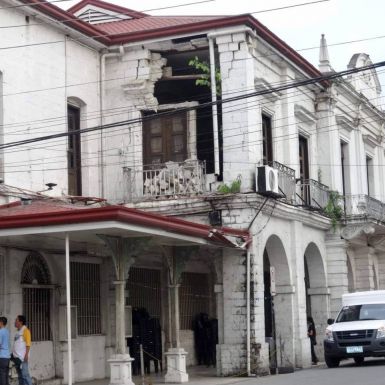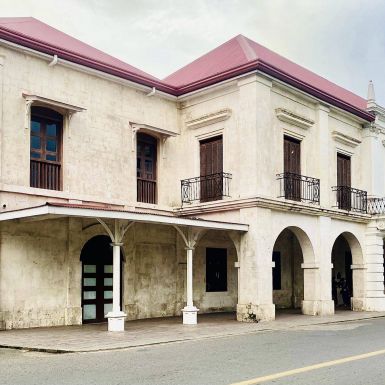NM Bohol Area Museum
The NM Bohol Area Museum (National Museum Bohol) currently occupies the former Provincial Capitol Building located in Tagbilaran City, Bohol. Declared an Important Cultural Property by the National Museum of the Philippines (NMP) on July 22, 2012, the Provincial Capitol sustained damages during the 7.2 magnitude Bohol Earthquake on October 15, 2013.
 The National Museum Bohol is the former Provincial Capitol building. Built in the Spanish colonial period, this built-heritage served as a tribunal, prison and living quarters for the Spanish military force. It was the seat of political power in the province until it was significantly damaged during the 2013 Bohol earthquake. It was donated to the NMP by the Provincial Government of Bohol on June 16, 2014. The building was repaired and inaugurated as the National Museum Bohol on July 22, 2018.
The National Museum Bohol is the former Provincial Capitol building. Built in the Spanish colonial period, this built-heritage served as a tribunal, prison and living quarters for the Spanish military force. It was the seat of political power in the province until it was significantly damaged during the 2013 Bohol earthquake. It was donated to the NMP by the Provincial Government of Bohol on June 16, 2014. The building was repaired and inaugurated as the National Museum Bohol on July 22, 2018.
Gobernadorcillo of Tagbilaran signed an agreement with the military and political governor of Bohol, Capt. Guillermo Kirkpatrick, to start the construction of the Plaza del Principe, the Provincial Capitol of Bohol.
 Built of lime, stone and bricks, construction of the building began in 1855 and was completed in 1860 under the term of Gobernadorcillo Esteban Butalid.
Built of lime, stone and bricks, construction of the building began in 1855 and was completed in 1860 under the term of Gobernadorcillo Esteban Butalid.
During the Spanish colonial period, the building served as a tribunal, prison and living quarters for the Spanish military force. It served as Bohol’s Provincial Capitol, until October 15, 2013 when it was damaged during the 7.2 magnitude Bohol earthquake. The building was donated to the NMP by the Provincial Government of Bohol on June 16, 2014. After its repair and restoration, the building was re-opened to the public as the National Museum Bohol on July 22, 2018.
At present, three gallery exhibitions are open to the public. The Pagpauli Gallery Exhibition is the first major exhibition of National Artist for Sculpture, Napoleon Abueva, in his home province. It is also the most comprehensive collection of the late artist’s artworks on display in the country today. The Pagbanhaw Gallery Exhibition was put up to commemorate the 2013 Bohol Earthquake and its aftermath. The Natural History of Bohol Gallery Exhibition features specimens and a diorama offering a glimpse of Bohol’s geological and paleontological treasures as well as the island’s unique and diverse flora and fauna.
CONTACT US
NM Bohol Area Museum
Address: Km.0, Carlos P. Garcia Ave., Poblacion 3, Tagbilaran City, Bohol 6300
Contact No. (038) 5019166
Email: infonmbohol@gmail.com
Facebook: National Museum Bohol
 The National Museum of the Philippines – Bohol is the former Provincial Capitol building, constructed in 1855 to 1860 to serve as a tribunal, prison and military quarters for the Spanish military force. The forces were placed under the command of Captain Guillermo Kirkpatrich, who was named military and political governor of Bohol. The Spanish authorities decided to build the headquarters in Tagbilaran, although it was a smaller town than the former capital of Loboc, because of its good harbor. The proposal to build the tribunal and military quarters was made in 1852.
The National Museum of the Philippines – Bohol is the former Provincial Capitol building, constructed in 1855 to 1860 to serve as a tribunal, prison and military quarters for the Spanish military force. The forces were placed under the command of Captain Guillermo Kirkpatrich, who was named military and political governor of Bohol. The Spanish authorities decided to build the headquarters in Tagbilaran, although it was a smaller town than the former capital of Loboc, because of its good harbor. The proposal to build the tribunal and military quarters was made in 1852.
 On December 15, 1854, Don Leon Torralba, who was the gobernadorcillo (mayor) of Tagbilaran, signed an agreement with Kirkpatrich, who was also an engineer, to start the construction of the Plaza del Principe, the Provincial Capitol of Bohol. Construction of the building started in 1855. Built in the traditional Spanish construction of stone and lime, historical records show that the builders used 27,300 bricks, 4,325 cavans of lime, 61,000 roofing tiles, etc. Most of the beams and girders were of “banaba” wood. Molave or tugas was used in the prison cell. The flooring was made of “bangkal” wood.
On December 15, 1854, Don Leon Torralba, who was the gobernadorcillo (mayor) of Tagbilaran, signed an agreement with Kirkpatrich, who was also an engineer, to start the construction of the Plaza del Principe, the Provincial Capitol of Bohol. Construction of the building started in 1855. Built in the traditional Spanish construction of stone and lime, historical records show that the builders used 27,300 bricks, 4,325 cavans of lime, 61,000 roofing tiles, etc. Most of the beams and girders were of “banaba” wood. Molave or tugas was used in the prison cell. The flooring was made of “bangkal” wood.
The next gobernadorcillo, Esteban Butalid, served from 1856 to 1860. Butalid, who made his wealth in shipping and trading, helped pay for the construction of the building and was finally completed in 1860.
The former Provincial Capitol has been repaired and renovated a number of times. The Bohol Provincial Government did historical research to check archival material on the building’s appearance during different stages in history to guide the renovation. This historical edifice served as the Provincial Capitol of Bohol, until October 15, 2013 when it was damaged during the 7.2 magnitude Bohol earthquake. It was donated to the NMP by the Provincial Government of Bohol on June 16, 2014. After its repair and restoration, the building was re-opened to the public as the National Museum Bohol on July 22, 2018.
The Provincial Capitol Building is exemplary significant because it features the use of large rough-cut blocks of coral stone. Over the years, the building has undergone a number of repairs and renovations but the original style in which the building was built has not changed. This building has stood the test of time and witnessed historical events that have transpired in the streets and corners of Tagbilaran, Bohol. Hence, on July 22, 2012 on the occasion of the 158th Bohol Day, the Provincial Capitol building was declared an Important Cultural Property by the NMP.
 At present, three gallery exhibitions are open to the public. The Pagpauli Gallery Exhibition is the first major exhibition of National Artist for Sculpture, Napoleon Abueva, in his home province. It is also the most comprehensive collection of the late artist’s artworks on display in the country today. The Pagbanhaw Gallery Exhibition was put up to commemorate the 2013 Bohol Earthquake and its aftermath. The first section of the exhibition talks about the early Boholano ecclesiastical art and architecture and the second part highlights the work of the NMP in rebuilding Bohol’s heritage churches damaged by the earthquake in 2013. The Natural History of Bohol Gallery Exhibition features specimens and a diorama offering a glimpse of Bohol’s geological and paleontological treasures as well as the island’s unique and diverse flora and fauna.
At present, three gallery exhibitions are open to the public. The Pagpauli Gallery Exhibition is the first major exhibition of National Artist for Sculpture, Napoleon Abueva, in his home province. It is also the most comprehensive collection of the late artist’s artworks on display in the country today. The Pagbanhaw Gallery Exhibition was put up to commemorate the 2013 Bohol Earthquake and its aftermath. The first section of the exhibition talks about the early Boholano ecclesiastical art and architecture and the second part highlights the work of the NMP in rebuilding Bohol’s heritage churches damaged by the earthquake in 2013. The Natural History of Bohol Gallery Exhibition features specimens and a diorama offering a glimpse of Bohol’s geological and paleontological treasures as well as the island’s unique and diverse flora and fauna.
CONTACT US
National Museum of the Philippines – Bohol
Km.0, Carlos P. Garcia Ave., Poblacion 3, Tagbilaran City, Bohol 6300
Contact No. (038) 5019166
Email: infonmbohol@gmail.com
Facebook: National Museum of the Philippines – Bohol
Instagram: National Museum of the Philippines – Bohol
Twitter: National Museum of the Philippines – Bohol
inquiry@nationalmuseum.gov.ph
(+632) 8298-1100
